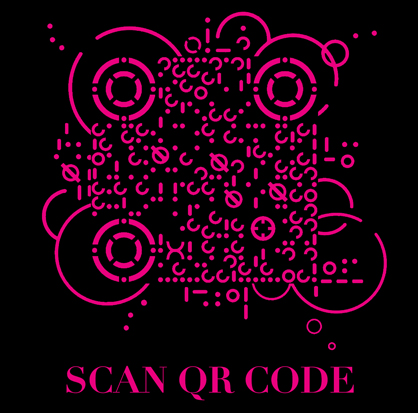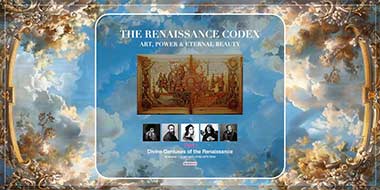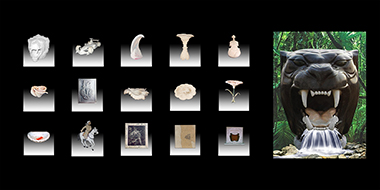ELEVATING HARMONY
“A Cultural Bridge To Enrich Chinese Tea And French Wine, Celebrating Heritage, Sustainability, And Innovation Through Global Collaboration.”
BY SUNA MOYA - 11 DECEMBER 2024

“A Global Commitment To The Cultural Legacy Of Chinese Tea & French Wine.”
Marking 60 years of diplomatic relations between France and China, this prestigious symposium served as a celebration of the rich and enduring cultural connections between two iconic traditions — Chinese tea and French wine. Both of these beverages, with their deep-rooted histories, embody the essence of their respective nations. They reflect not only the 'terroir' of their regions but also the passion and national identity of their people. As much as they share a profound cultural significance, they also present fascinating contrasts in their cultivation, preparation, and consumption.
Chinese tea, with its thousands of years of tradition, is a drink that embodies tranquility, mindfulness, and harmony with nature. It is deeply intertwined with Chinese philosophy, representing a lifestyle that values balance and introspection. On the other hand, French wine stands as a symbol of sophistication and refinement, representing the art of living that has been perfected over centuries. It speaks to a culture of elegance, craftsmanship, and the enjoyment of life’s finer moments. Together, these two beverages transcend their origins to unite the East and West in a shared appreciation for heritage and the artistry that each represents.
A key moment in the symposium was the signing of a Memorandum of Understanding (MOU) between France and China. This agreement aims to foster greater collaboration, promote cross-cultural exchange, and strengthen ties between the two nations in the realms of agriculture, sustainability, and culinary traditions. This MOU marks an important step in recognizing the value of these time-honored traditions and ensures their preservation for future generations.
One of the highlights of the event was an enlightening conversation with Jérémy Tamen, UNESCO’s Tea Expert, who has dedicated his career to bridging the gap between traditional tea craftsmanship and modern sustainability. With a focus on ecological responsibility, Jérémy works tirelessly to promote not only the art of tea making but also the need for sustainable practices in tea production. Through his efforts, he has crafted signature tea blends that preserve cultural heritage while integrating modern, eco-conscious techniques. Jérémy’s work is a testament to the powerful intersection of tradition, sustainability, and artistry—qualities that are essential to both Chinese tea and French wine, and that are now being celebrated on a global stage.
— Suna Moya
ELEVATING HARMONY
“A Cultural Bridge To Enrich Chinese Tea And French Wine, Celebrating Heritage, Sustainability, And Innovation Through Global Collaboration.”



QCEG: Could you share how you became a renowned tea expert and what experiences shaped your path?
Jérémy Tamen: My connection with tea began many years ago with a famous yellow tea bag, and since then, it has been a constant presence in my life. I studied education sciences, and ethnobotany, and trained at ISIPCA, the perfumery and flavours school in Versailles. After working with major French tea houses, I decided to break away from commercial brands to work more closely with producers and explore the creative processes behind tea.
Patience, respect for others, and a deep love for plants and the land guide my work. Today, I collaborate with tea producers in Japan, Réunion, Peru, Taiwan, China, and Vietnam. I am an expert at UNESCO CA, teach at ESP, and serve as the first Western expert on the committee of the Chinese Tea Cultural Centre in Paris, as well as working with Yunnan and Peru.
QCEG: As a tea expert, which aspects of tea’s cultural heritage inspire you most, and how do you see this collaboration enhancing its significance?
Jérémy Tamen: Several aspects inspire me. First, the recognition of women’s often-overlooked contributions to agriculture and the connection between plants and medicine. Second, the sustainable and fair development of tea production, which aims to restore responsible agricultural practices. While many producers, especially in Peru and Réunion, have long prioritized environmental awareness, ecological challenges remain in some global plantations. Lastly, the preservation of cultural heritage, including the artistry, craftsmanship, and traditions of tea production and consumption, is central to my work.
QCEG: How do you envision this protocol fostering a deeper appreciation for tea traditions in China and France, especially among younger generations?
Jérémy Tamen: Tea has become increasingly popular in France, particularly among younger generations, largely due to the influence of Asian culture—from the '90s Club Dorothée, manga, and anime, to literature, gastronomy, and, of course, the art of tea. The variety of teas offered by both generalist tea houses like Mariage Frères and Palais des Thés, as well as specialized brands like Tea & Ty and Les Thés sur Terre, has also contributed to this growing interest. This protocol will likely further deepen this appreciation by connecting these traditions across cultures. The popularity of various tea forms, especially bubble tea, has sparked curiosity about tea culture among young people. Brands like Laïzé in Paris are perfect examples of this trend. This protocol will further enhance the enthusiasm for this ancient drink.
QCEG: Are there elements of Chinese tea culture that resonate with French wine traditions?
Jérémy Tamen: Both tea and wine come from nature, shaped by the hands of skilled men and women who master the art of transformation and maturation to create exceptional products. Additionally, the artistry of tasting implements—ceramics, porcelain, crystal, and gold—plays a key role. In both China and France, great artists have crafted remarkable pieces for tea and wine tasting, enhancing their aromas and contributing to the art of tea and dining.
QCEG: How does this protocol aim to create a cultural bridge between Chinese tea and French wine, encouraging appreciation while also inspiring innovation in both traditions?
Jérémy Tamen: Several aspects will be developed. Public initiation into these cultures will open new markets for tea and wine producers. The commercial link between the two countries and the preservation of traditional know-how will also be strengthened. This is an incredible opportunity for our countries. This exchange will benefit other tea and wine-producing regions as well, creating a strong connection between our cultures through tea as a gastronomic product.
QCEG: How could this collaboration deepen our understanding of tea craftsmanship and production history, offering new perspectives on this ancient practice?
Jérémy Tamen: By safeguarding this intangible heritage, we can discover exceptional products from regions known for their artisanal tea production. My work with producers over the years has brought specialty teas from places like China, Peru, Réunion, Japan, Korea, Taiwan, and Vietnam to France, and this collaboration will make these unique teas more accessible to younger generations. The aim is to showcase the expertise of tea artisans while preserving this rich tradition.
QCEG: What specific aspects of tea craftsmanship and heritage are you most excited to highlight in this initiative?
Jérémy Tamen: China, like France with wine, has numerous tea-producing regions, with over 20 provinces, from Yunnan to Fujian. This initiative will also spotlight other global tea regions, including Japan, Korea, Taiwan, Réunion, France, Peru, and Vietnam. Each has its own unique varieties and specialities, offering a diverse range of gastronomic experiences. It’s an opportunity to introduce the public and culinary professionals to rare craftsmanship and distinctive teas, from Yunnan to Cusco, Japanese black teas, and Réunion Island teas.
QCEG: How do you hope this agreement will address challenges such as climate change within the tea and wine industries by promoting sustainable practices in both sectors?
Jérémy Tamen: By emphasising craftsmanship and traditional practices, we inherently support environmental preservation, biodiversity, and the recognition of women's contributions. We aim to support farmers in regions like Peru, France, and Réunion, where sustainable practices have long been upheld while encouraging other areas to adopt responsible methods. Consumers, particularly in the French tea market, play a crucial role in addressing the environmental impacts of climate change through their choices.
As an ethnobotanist and tea researcher, I am committed to cultural heritage, ethics, and environmental integrity. My motto has always been "Nature, people, and tea." I work closely with associations, such as the one in Hadong, Korea, and have longstanding support for producers in Peru and Réunion, standing by them through both good and challenging times.
QCEG: What types of cultural exchanges or projects do you envision emerging from this collaboration to encourage knowledge sharing between tea and wine artisans?
Jérémy Tamen: Starting in January 2025, we’ll host masterclasses and conferences at the Chinese Cultural Tea Center on Chinese teas and their synergies with French wine. I also teach at the Higher School of Perfume, where we've included a 30-hour tea training module for FESAPCA students in the Aromas program. As pioneers in this field, we believe this cultural exchange will continue to grow, especially through the education of young people.
QCEG: How do you envision this protocol fostering new research into tea traditions, bringing fresh perspectives to such an ancient practice?
Jérémy Tamen: When I search for new teas or meet producers, my approach is never haphazard or motivated purely by business interests. There’s always this moment of cultural immersion, an exchange on the producers’ work and on how tea was traditionally prepared and consumed. To me, it’s about sharing and engaging with "the other." My role as an ethnobotanist and tea researcher means approaching my work with this same mindset. I aim to highlight the producers’ efforts, the tea makers, and the artisans—their histories and their heritage. Through my tea selections, masterclasses, and conferences, I strive to preserve these sometimes threatened or forgotten skills.
QCEG: Could you share your thoughts on how this protocol might blend traditional practices with modern innovations in tea production, balancing heritage and progress?
Jérémy Tamen: Tea has long seen innovation, especially in agronomy to improve aroma and resilience, as well as in its use in gastronomy, pairings, and cocktails. However, it's crucial to preserve traditions and honour this cultural heritage, using it as both inspiration and a foundation for innovation and trends.
QCEG: How do you see tea and wine pairing experiences evolving through this collaboration, and what new ways could emerge to enjoy both?
Jérémy Tamen: The possibilities are endless. With the expertise of chefs, sommeliers, and tea specialists, we can craft unique experiences, whether at fine dining tables or for personal enjoyment at home.
QCEG: What are your hopes for this protocol in preserving and sharing tea's cultural heritage worldwide?
Jérémy Tamen: I’m optimistic. In challenging times, tea, gastronomy, and curiosity about this heritage often act as bridges between cultures.























































































